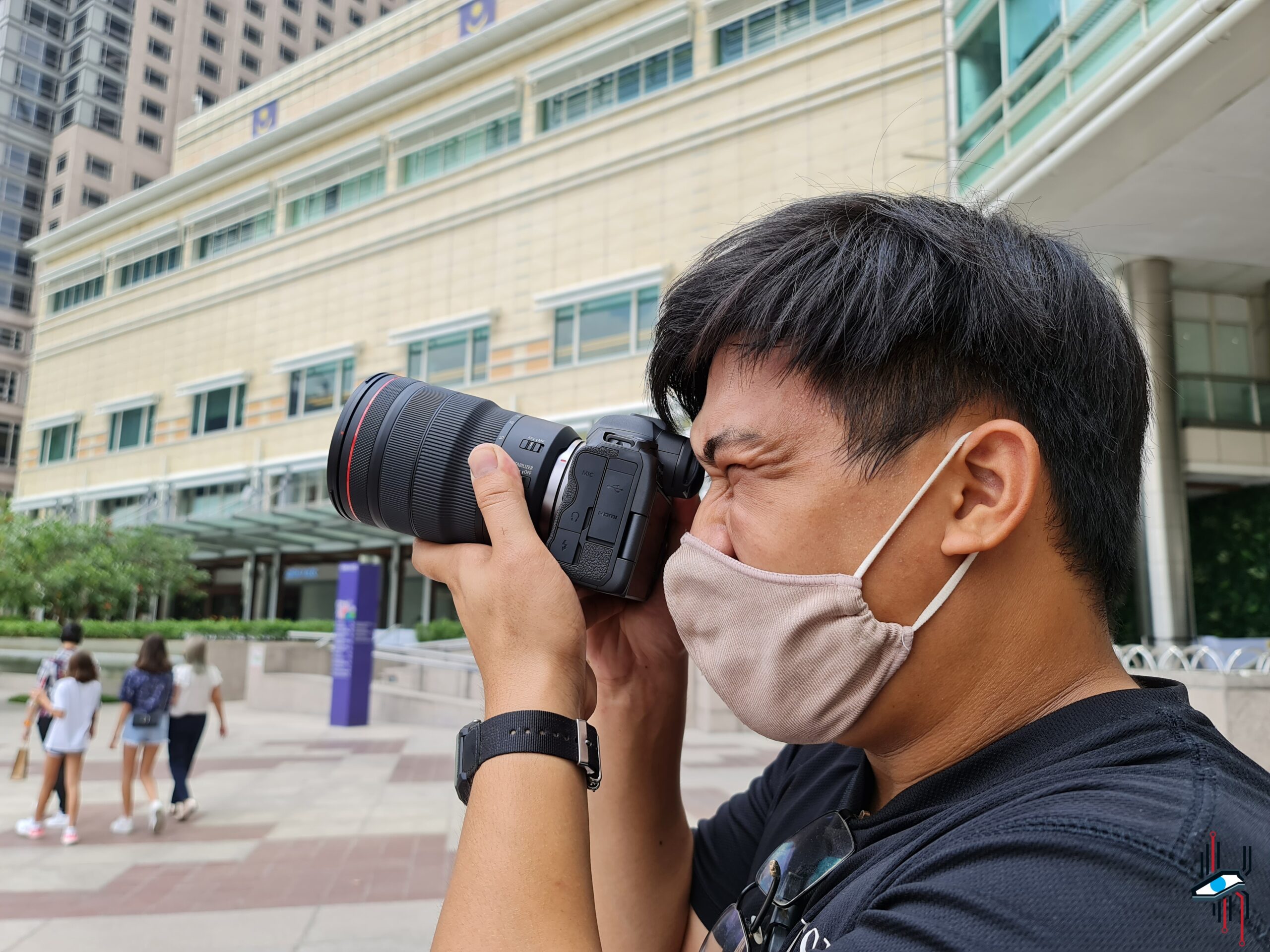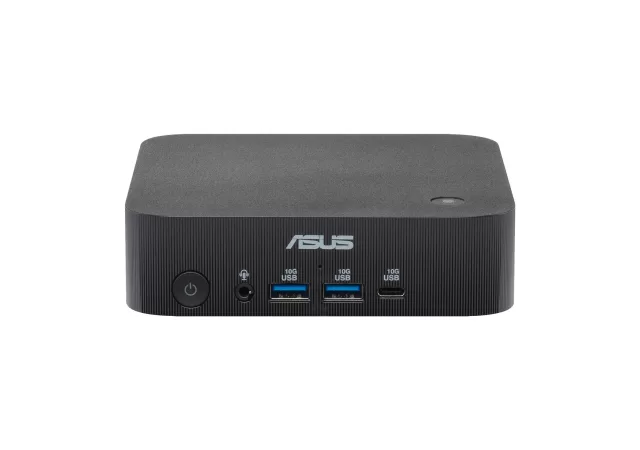The world has changed drastically in the time of this COVID-19 pandemic. The future generations will look back at this time and wondered how we ever got through this odd year unscathed. The thing is, we did not go through this unscathed. We are still living through it and everyone in the world is affected in different ways.
In Malaysia, the government decided to act fast and locked down the country to control the viral spread. They introduced the Movement Control Order (MCO) to limit the amount of movements and people exposed to the outside world and each other. Everyone had to be wearing masks, and everyone had to distance themselves from each other.
Even after the whole MCO period which lasted nearly three months for Malaysia, in a period Malaysia calls Recovery Movement Control Order (RMCO), plenty has not recovered, or completely adjusted to the world that came out after. What better moment then to go for a photo walk? It was at a perfect moment too; Canon just launched their new Canon EOS R5.

The Canon EOS R5 is Canon’s latest mirrorless high-end photography tool. The new mirrorless camera has a 45-Megapixel sensor that can shoot at 20fps (very impressive). It packs Canon’s latest Digic X image processor as well. Best of all, at least as hyped by Canon themselves, is the fact that it now shoots videos at 8K resolution, uncropped.
It sounds like a recipe for a production powerhouse. It also sounds like Canon is taking the mirrorless market seriously, taking the fight to Sony. With the introduction of the Canon EOS R5, they are one-upping Sony in their video capabilities. But the improvements do not just end there. They have introduced some improvements in their video stabilisation capabilities. Finally, you have an in-body image stabiliser. Imagine using that with a compatible Optical Image Stabilised lens, the result should look amazing.
In all seriousness though, while it does look like an ultimate content creator tool, it is not priced as such. It will set you back MYR 17,999. That is the price of its body only. You add up the mirrorless RF lenses that Canon makes, and that will easily go up to MRY 20,000 for a set of content creation kit that is ready to go. If your first reaction is “it is so expensive,” we agree. For comparisons sakes, a Blackmagic Design Pocket Cinema 6K camera will set you back about MYR 10,000 without lenses.
We do not think that the Canon EOS R5 is a tool that you might want to rely on for 8K videography though. We see it as a photography first device with some impressive video shooting capabilities. We also almost never relied on anything higher than 4K resolution in our production so far because we post our videos in 1080p Full HD resolutions. That also means that 4K videos are more than enough for us. Of course, with 8K you have more resolution and pixels to play with. Which also means you can capture more detail and you can pick any fames across the 8K frame to create 1080p videos.

Still, the Canon EOS R5 is a photography first camera in our opinion. That is what we are going to work with in these 24 hours with the camera. To be fair, we only have a few days with the camera from Canon and we could only spend a whole day with the camera. We chose to take the camera around Kuala Lumpur after the three months of MCO, just to see what the town looks like after the big pandemic scare. Of course, we want to see what the camera can do.
We have to apologise a little bit. We were so focused on taking photos using the Canon EOS R5, we forgot to take photos of the camera itself. Most of the photos of the camera comes from Canon’s website. There is virtually no difference between the camera and its pictures from the website. We do apologise for this oversight, but what matters is the end result, right?
The First Few Hours – Preparation in The Night
We had planned out a whole day, essentially to get the Canon EOS R5 in different kinds of shooting conditions and different times. It is also a test of its battery life because we are left with only one battery. In that case, we had to ensure that the battery packs a full charge for the next day of use.
That is the first thing we did, get the battery charged. But before that, we had to familiarise ourselves with the camera before taking it out for a spin, just so that we do not need to spend an hour to set the camera up the next day. Of course, we could just leave it on Auto mode and let the camera do its thing. Thing is, Auto mode does not do the review justice enough, as excellent as it is.
First Impressions

First things first, the Canon EOS R5 breaks all the rules or the conventions of a mirrorless camera. The Canon EOS R5 is big and bulky. It is lighter than the conventional DSLR, yes, but not by that much. Compared to what we are used to from Sony, it is a hefty camera in our hands. It is a much bigger camera compared to the Sony Alpha cameras as well.
That is not necessarily a bad thing though. It feels familiar to Canon user, and that is important. It also means that the ergonomics are quite excellent for a camera, something that Canon has always been particularly good at. Thanks to the larger body size as well, your grip on the camera is more firm, more assured. Of course, the larger grip also means you can fit larger batteries that can last a whole day. True enough, I did not need to switch battery or even need to worry about battery life the whole day.
If you came from a Canon platform from before, every button is where they need to be and where you are used to. The touch sensitive button and slider thing that was on the Canon EOS R is gone to be replaced with a joystick, which is better in our opinion. Thanks to the bigger body too, the buttons do not feel cramped and compacted. Overall, the Canon EOS R feels good in the hands, albeit a little hefty for a Mirrorless camera.

Then you dig into the settings to get familiarised and do a little bit more settings so that you are more comfortable with the camera. There are a few customisation options, which we did not touch, which means most of the buttons work just as the factory intended. In that case we just need to know what buttons and knobs do what and test them just to know they work. Of course, we had to see if we can get our viewfinder to see what we should see when we take photos. It does that by default too though, we just need to be sure.
The settings menu is as simple as you can remember though. Canon’s menu system makes plenty of sense and is simple to understand. Everything is where you expect them to be and you do not need to dig too deep into the menu system to find what you want.
Walking Through Kuala Lumpur
I would say that the best way to tell you about the camera is via the photos that we take through the streets of Kuala Lumpur. But of course, we cannot just do that. While we are going to still show you the photos that we took, we are going to walk you through the camera as well.

The Set-Up – Versatility, Convenience, Best Compromise
First, we are going back to the weight of the camera again. In terms of an interchangeable lens camera, this is one of the lightest full-frame cameras that Canon has made. In that sense, it is less hefty than carrying a large Full-Frame DSR kit. That also means that it is less cumbersome. The lenses we have with us were more cumbersome, in fact. We had with us an RF24-70mm f/2.8L IS USM and RF15-35mm f/2.8L IS USM lenses loaned with the EOS R5 so that we can shoot a variety of things.
Why did we choose these two lenses? Good question. The most general lens than any photographer can get is the 24-70mm lens. In the case of the Canon EOS R5, only the RF 24-70mm f/2.8L IS USM is available for the mirrorless camera. I could go for the 28-70mm option, but that will add MYR 3,000 to the shopping cart. Well, not like we bought this anyway. We are going with sensibility and practicality here.
The 24-70mm was a must have, so that was settled quickly. We had to think of the perfect set up to got for a walk through the city. In that case we also had to think about heft. So, we decided that we needed only one more lens. Usually, you want to go for three lenses for the perfect set up.

Initially we thought of getting a prime lens, a portrait 50mm or 35mm lens. We also wanted a wide frame, so we thought the 35mm could be perfect. But what if we wanted to capture an even wider area? What if we want the extra width on the frame to capture something like the Petronas Twin Towers properly? We decided to go for a zoom lens then. The RF15-35mm f/2.8L IS USM is the perfect choice.
We wanted to see if the extra stabilisation from the body would work nicely with image stabilised lenses, that is why we went with the RF IS lenses. The total price of the kit we tested totals to MYR 28,437. That is still a lot of money, just for a photo walk. But the lenses we pick are not just lenses you can use in a city. They are some of the most versatile lens lengths you can get for any set up. You can take the set up for a video shoot, for landscape photography, portrait photos, and more.
Keep in mind that these are the choices we made based on what we feel is the best choice for our use case. You may have a completely different perfect set up from what we pack in the gear bag, and that is not wrong either.
The Canon EOS R5
We left most of the settings default on the camera and switched our camera mode to manual to have full control of whatever the camera has. We switched between the two lenses constantly in different situations as well. We also went around KL the whole day, starting from the most iconic skyscraper in Kuala Lumpur, all the way to the weirdly pretty intersection of Bukit Bintang.

Source: Canon 
Source: Canon 
Source: Canon 
Source: Canon 
Source: Canon 
Source: Canon 
Source: Canon 
Source: Canon 
In this write up we are going to be focusing on its photo taking abilities more than its video capabilities. While there is enough time for us to work on a video with the 8K video capabilities, we will not have time to work on its photography aspect in that case. We had to choose.
But we also want to know if the interchangeable camera market is dead. We want to know if the Canon EOS R5 still has its place in a photographer’s kit bag. We want to know if it is worth spending all that money on the Canon EOS R5. 24 hours is not a lot of time, but we recon we have enough information after a whole day of walking through the city with the EOS R5.
We started in the morning where lighting is not an issue. One of the rules in photography and videography alike is knowing how to work with lights and getting enough lights for your subject. If you are using a smartphone camera, you leave it to auto and it will adjust itself in Auto mode and AI to help you. On the Canon EOS R5 or any other interchangeable cameras you might want to practice working with as much manual controls as possible for practice. Mastering those also allows you to create more creative looking photos. After all, it is all about making your subject look good.
Speedy Autofocus
Canon cameras has always been known for their accurate and fast autofocus speeds. They have no problem following a subject or change depth quickly depending on your subject. The same can be said on the Canon EOS R5 too. Autofocus is fast and responsive, and very accurate as well. They say that the autofocus is a little faster than before. In our tests, we cannot tell because we do not have another Canon DSLR to test it against, and the speed difference is minute.
What we appreciate though is the wider autofocus points on the camera. The amount of autofocus points on the Canon EOS R5 also means that autofocus works on almost every part of the frame. That also means that even if your subject is way off the frame, the EOS R5 should have no problems getting it in focus. You might want to tap on your touchscreen though, if your subject is that far off to the side, just to help the camera a little bit.

If your subject is a person or animal though, Canon EOS R5 has Eye AF (eye autofocus). The Autofocus automatically recognises an eye on your subject and adjusts the autofocus to the eyes. The result is always sharp faces kept in focus.
Overall, there is nothing too surprising from Canon’s brilliant autofocus technology. It does not mean that it is not special either. Imagine trying to keep up with a moving subject while shooting 45-Megapixel photos in 20fps, then that sounds more impressive. The Canon EOS R5 can really keep uo with that.
Bigger Touchscreen, Better Viewfinder
Of course, because this is a mirrorless camera, the only preview you get from the camera is what is being fed to the lens. You have to rely on the EOS R5’s large 45-Megapixel sensor to feed what it ‘sees’ to either your 3-inch LCD display or the electronic Viewfinder (EVF). Here comes the small problem of mirrorless cameras.
EVF, in its early days in the first of Sony’s very famous line of mirrorless cameras are not great. They are a little slow, they tend to flicker a little bit, they are also not very colour accurate in that time. These are still perceived to be problems on mirrorless cameras today. That is also because you are looking at a screen instead of a mirror.
Thankfully though, EVF has taken a major leap since its first inception and its use in the first of Sony’s many mirrorless cameras. EVFs are now in a league of their own with added flexibilities and advantages of their own. In fact, some people might find that an EVF could be better than the traditional see through viewfinder.

Yes, you are mostly looking at pixels through the viewfinder window. You are also looking at very tightly packed pixels in a small space, which also means you should not see the individual pixels sticking out to you. For the Canon EOS R5 at least, the EVF is something you are going to rely on quite a lot.
The EVF on the Canon EOS R5 is reliable though. The display is bright, accurate, and fast. It easily keeps up with you and what you need it to do. What you see on the EVF is what you most likely will get once you press the shutter button.
That is another advantage of the EVF, you see what the sensor sees. While that is also true for a traditional DSLR, the traditional DSLR does not necessarily adjust itself to the changes in the sensor sensitivity. The EVF, by default, does. That also means that the EVF can present to you the most accurate photo once you press the shutter button at the current settings, which I always find very helpful in all kinds of conditions.
You can set your EVF also to adjust itself to the surroundings so that you can see through the EVF even if your normal eyes cannot. It takes a little bit of digging through the settings to get the EVF to adjust itself to ambient lighting, but it is worth it if you work in the studio and rely on the flashes for your main source of lighting. It at least helps you frame your subjects in low-light conditions. Sadly, the Canon EOS R5 does not have the same low-light shooting capabilities of the Sony α7S line-up.
Clever Protection
The Canon EOS R5’s big body has some advantages though. Of course, Canon will keep saying that because of the more compact form factor they can fit a bigger lens flange and therefore create lenses with bigger aperture. They also say they can fit higher quality glass and have more creative possibilities with new mirrorless lenses, since the glass distance from the sensor to the lens is much shorter.
Beyond that though Canon has fitted something they probably forgot to mention plenty of in their press releases and statements. They can install a curtain in front of the sensor without sacrificing weight and space to protect the sensors from debris and what not when you need to change lenses. This is quite clever for us.

We were going around shooting photos on the street of Kuala Lumpur. The place is not necessarily the cleanest place in the world. There is pollution from everywhere, and quite dusty due to the never-ending construction projects, and the overwhelming traffic.
If you are a photographer, you know how important it is to keep dust and grimes away from your sensors. A spec of dust can potentially damage your sensors and ruin your camera. Its most vulnerable moment is when you change lenses. We were toying between the longer lens and the shorter lens.
At least with the cameara on, the curtain comes down whenever we detach the lens from the body to swap to the other lens. That also means that your sensor is protected behind a layer of plastic to ensure we do not ruin the expensive kit. But we find that we will not be the only ones benefiting from this set up. Wedding photographers, or even studio photographers can benefit from this, since their work requires them to switch between multiple lenses all the time.
Super Photos, Super Quiet
The Canon EOS R5 may be advertised as an 8K video recoding powerhouse with a stellar built-in stabilisation. In our eyes, the Canon EOS R5 is a photography first camera with a steal 45-Megapixel sensor that is also paired to a built-in stabilisation mechanism that can be paired to image stabilised lens platforms too. The results of this combination? Nothing short of breath taking.

The first thing you have to notice on photos that you take on the Canon EOS R5 is the sharpness in details you get on the 45-Megapixel photos. If you shoot in RAW, you get huge photos to work with on the Canon EOS R5. You also get detail like no other with RAW.
Thing is, you are going to be posting most of your photos in JPEG file format. In most cases too, when you are doing things quickly, you are going to work with JPEG file formats too, they are smaller and quicker to work with, they are ready for presentation. RAW has its advantages, but you might want to take some time with the images for post edits and other creative things you want to work with on the photo.
We Took photos in both RAW format and JPEG format. We can tell you that even in JPEG format, the amount of detail is quite amazing if you get your focus right. Everything in focus of the camera is super sharp even when you zoom in. With Eye AF, you are really a step above in your portrait game. Of course, some of the details in the photos are thanks to the make of the lenses Canon borrowed us as well. They are RF lenses with f/2.8 after all. These are also lenses that costs about MYR 10,000 in total, mind you.
Because this is a 45-Megapixel photo too, you can manipulate your frame a little bit more just because you have more pixels and detail to play around with. You can zoom in a little bit and your photos will still look stellar. We managed to select a few photos and edit them through a smartphone as well, to be posted on Social Media. With a little bit of colour tweak, they can look stunning.
Since this is a Canon camera, skin tones are as expected. Skin tones are very natural to work with and some photos look like they are perfect for posting right out of the camera. Of course, we prefer to edit them a little bit first before posting. If you work with RAW photos, you can compensate under or overexposure very quickly, you can even change the colour profile a little bit just to make correct some lighting effects on skin tones and objects. Then again, you can make your photos look like anything in RAW format. Malaysia is also blessed with multiple cultures and various skin tones though. In that department too, we are happy to report that the Canon EOS R5 can make any skin tone work.
The first thing that we noticed with the camera also is just how quiet it is. Because there are no mechanical moving parts, the camera shutter action is a virtual one instead of an actual actuation of a shutter mechanism. That also means you can operate is silently and quickly at that. This can shoot at 20fps stills after all. We took advantage of that, but we have to remember to release our shutter button as soon as we snap a photo. Plus, the quiet shutter does not alarm others during out street photography session.
At this point we would say that it is easier and better for you to judge the photos on your own. The selected photos are in JPEG format and they are not altered in anyway before uploaded.
Gallery
Edited from RAW
24 Hours of Canon EOS R5
The Canon EOS R5 is nothing short of breath taking in its touted abilities and capabilities. It is the most feature packed Canon high-end camera to hit the market too. On paper, the Canon EOS R5 seems to bridge the difference or deficit they had against the other mirrorless giant, Sony. In some sense, the Canon EOS R5 seems to be the company’s answer to the mirrorless camera market.

At the same time though, the Canon EOS R5 does cost quite a little bit more than the traditional DSLR. It is sold as an all-rounder too, which seems a little counter-intuitive to what the market is used to with mirrorless cameras. We also think that the communication efforts also deviate from what the camera does best; take breath taking photos without breaking your backs. We also think that Canon could also use some variations to different focuses in their mirrorless camera line-up.
We love their lenses though because they really know what they are doing with their lenses. Of course, that should be quite expected since they have been working with lenses forever. They are the world’s largest camera lens manufacturer for a reason.
We also love the fact that Canon is fitting even more technology in their camera than we could possibly ask for. The in-body stabilisation combined with the lenses that we had at our disposal made taking photos seem easy. You could take photos while walking and the photos will come out stable and clean. Of course, you might want to consider holding steady when you are taking photos in low-light conditions. But running and gunning is possible with the Canon EOS R5.
We would like to have a little bit more time with the camera, obviously to test out its 8K video recording capabilities. We did a quick timelapse video manually, but that was not in video mode. There are a few more functions we would like to familiarise ourselves with too with the camera. We did not get to test out plenty of the modes that the camera offers, because we had a crammed schedule with the camera.
Would we recommend the camera? With just about a day or so with the camera under our belts, it is hard to say. We would say that it really depends on what you want from your camera. If you have access to about MYR 25,000 and is a Canon enthusiast, I will say you could.
But the decision must come into its own considerations as well. You have to think of you lens ecosystem. Remember that the Canon EOS R5 works on RF lenses. You need to buy an adapter to make your EF lenses work with the camera. That is extra expenses if you already shoot exclusively on EF lenses. It is still better than porting from a Nikon or a Sony ecosystem though. If you are already on RF lenses since the Canon EOS R, I will ask you to reconsider your decision properly. The Canon EOS R is not a bad camera on its own. Sure, the Canon EOS R5 can shoot at 8K resolution, but would you use that in your workflow?

If not, you can also see this as a chance to jump ship. If you are running on Canon’s EF lenses ecosystem and you want to transition to a mirrorless camera, you could either look at what Nikon has to offer or even Sony. Sony’s lenses are already made to work with their mirrorless camera, and they have been in the game for a long time. That also means that their lens selections are currently more vast too. At the same time, you might spend a little less if you switch platforms, depending on what you want from your camera. If you are a photographer first, the Sony α7R III is about MYR 5,500 less than the Canon EOS R5. The α7R IV with a 61-Megapixel sensor in tow is MYR 2,700 less than the Canon EOS R5.
The choice, ultimately, is still yours. We like all they have done to the Canon EOS R5 to make it a huge and real contender in the mirrorless camera market. The only issue is that it is still more expensive than what most of its competitors can offer. We also think that Sony’s vast experience in the mirrorless market still means something. We are not taking anything away from the canon EOS R5, it is a formidable piece of kit to work with. But we would still rather fall back on Sony for mirrorless cameras, sad to say.







